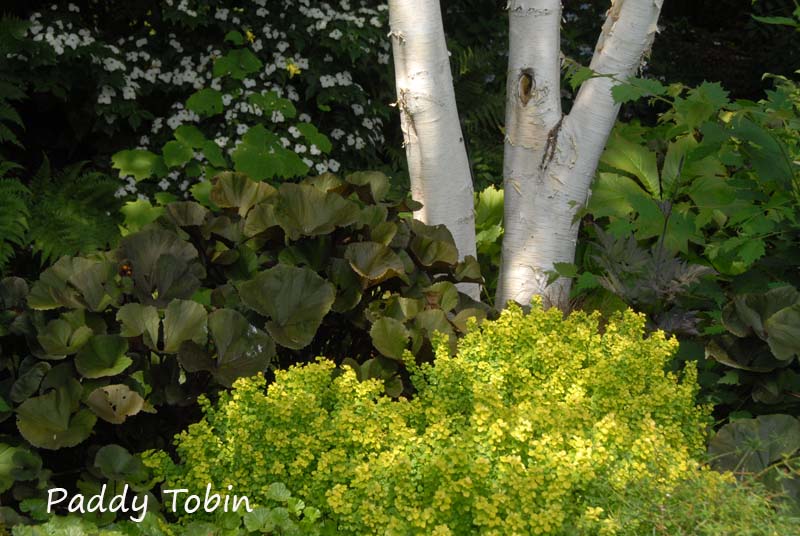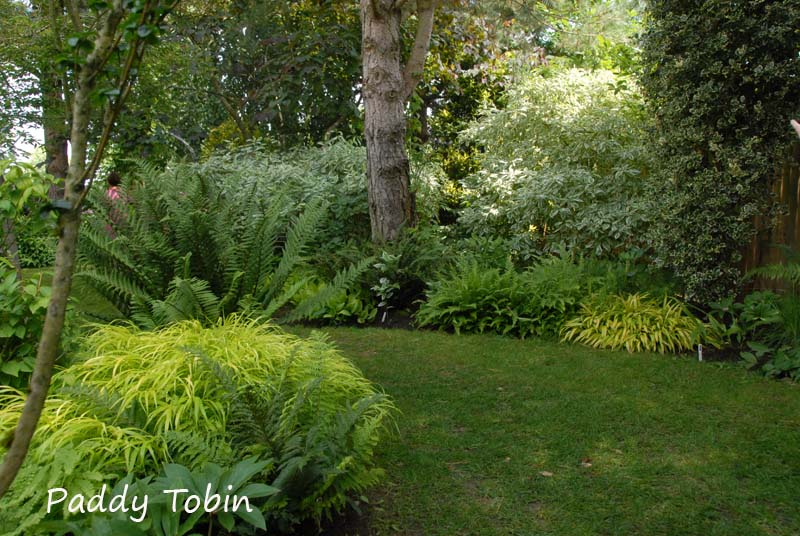We visited John Massey’s garden at Ashwood Nurseries last week and some sections of the planting left me wondering if at times we garden to an extent that our gardens can become unnatural.

Of course, all our gardens are unnatural to a lesser or greater extent according to how we garden. We take some control over the growing conditions, the selection of plants and their maintenance but, when I visited John Massey’s garden, there were plant pockets that could only have been accomplished by great intervention as the plants seemed to be out of sync with their surroundings and prevailing weather conditions.

At the time of our visit England had experienced an exceptional period of hot and dry weather, much as we have experienced here in Ireland though their temperatures were generally a few degrees higher. It is to be expected in such conditions that grass will dry up and become brown and that plants will begin to wilt. Gardeners realise this and accept it to one degree or another. Of course, a person who is opening one’s garden to the public will make every effort to combat the effects of the weather and John Massey was opening for the benefit of a charity on this occasion and, understandably, wished everything to look well for the visitors – and, indeed, it all looked splendid and it was the fact that it all did look so splendid which provoked these thoughts of when are such interventions – heavy watering, in this case – a step too far, a step where it might seem we are gardening against nature rather than with it; a step which runs contrary to Beth Chatto’s dictum of “right plant, right place” to one where the gardener creates the “right” place regardless of the lengths required to do so.



It was just a thought, a passing thought, something which caught my attention, perhaps, because it was in stark contrast to my own garden where I cannot and would not water the plants to that extent but am more accepting of the prevailing conditions – no, “accepting” might not be the right word as there is certainly loud and continuous grumbling about present conditions – “resignation” might better describe how I feel about matters.
Apart from such reflections, the visit to John Massey’s garden was very enjoyable. It has a wonderful setting beside a canal, with passing barges, though John’s planting has more or less screened off the canal from view which struck me as surprising. The large number of what were when planted “miniature” conifers date the beginnings of the garden and continue to give it backbone and, I imagine, winter interest. As could only be expected from a man with a nursery business there was a very interesting and attractive selection of plants and, also, a large selection of garden ornaments – more than I enjoyed so we will not mention the life-size gorilla under the bamboos.

I hope you enjoy this slideshow of images from John’s garden and, if you get the opportunity, I recommend a visit.
I appreciate the virtual tour, Paddy. I have often made tentative plans to around hellebore season, but have never made it so far, for one reason or another.
LikeLiked by 1 person
We did a one-day trip from Waterford a few years ago: drive to Dublin (100miles) fly to Birmingham, hire a car, drive to Ashwood, got our hellebores and then back home that evening. Great fun but tiring – and well worth it for the hellebores. The gardens are well worth a visit and open for the National Gardens Scheme (The Yellow Book) once a month, it seems. We enjoyed it.
LikeLiked by 1 person
That’s dedication! I have visited the nursery a few times and went to one of their hellebore days a few years ago.
LikeLike
We included a visit to the national collection of witch hazels as well that day I remember. All a bit of a gallop but good fun. Ashford hellebores were fabulous – still are!
LikeLike
Not totally on topic, but we are rejoicing in some gentle rain today in Kent! It is highlighting the golden colour of the landscape … hope Waterford is cooler and damper too!
Your comments regarding gardening with Nature are spot on … lessons to be learned.
LikeLiked by 1 person
We have had a few light drops here today but not enough to even dampen the garden. I gardened away while it “rained”.
LikeLike
As always thoughtful pertinent comment. I’m in complete agreement with sparing as much as possible our reserves of water. Grass will come back and I hope most of my plants will! I think the gardener may survive if he continues to swim!!
LikeLiked by 1 person
It’s a worry at the moment as it is unprecedented but, hopefully, all will recover. Have you changed your name – “YPeter”?
LikeLike
Good Blog Paddy. I agree with your sentiments. Is a lot more difficult and challenging to work with nature but very rewarding.
LikeLiked by 1 person
I understand it is very difficult for somebody who opens their garden to the public not to do all in their power to have it looking well. Few visitors would be happy with “everything has dried up in the hot weather”
LikeLike